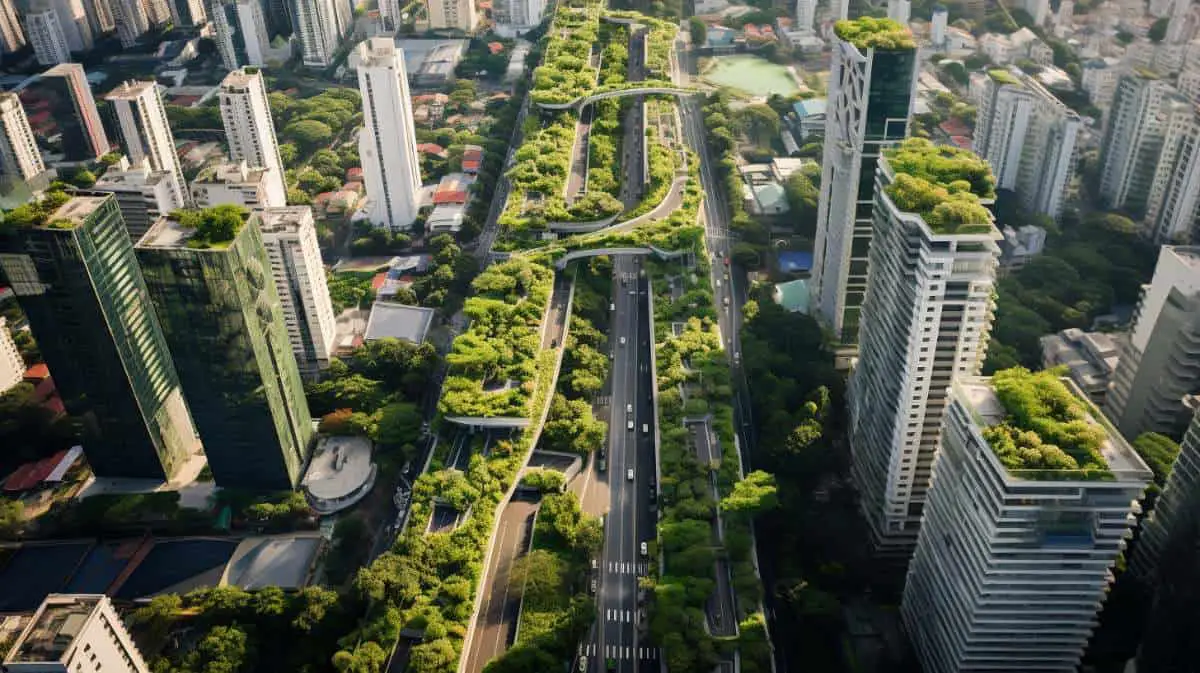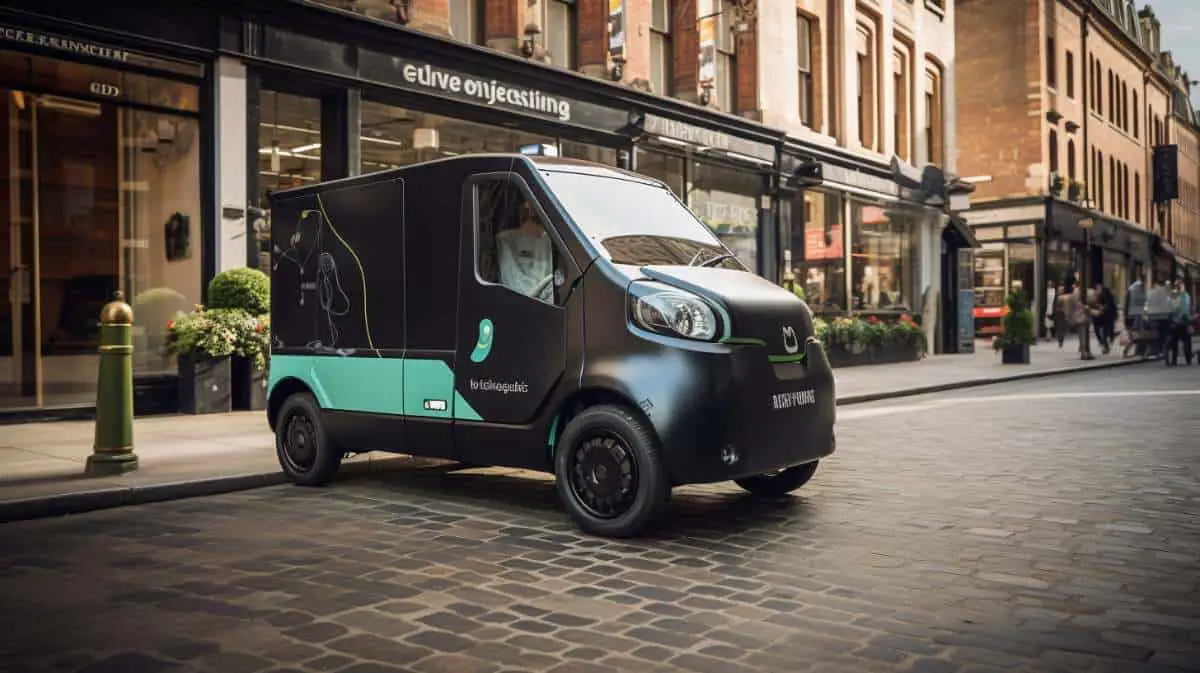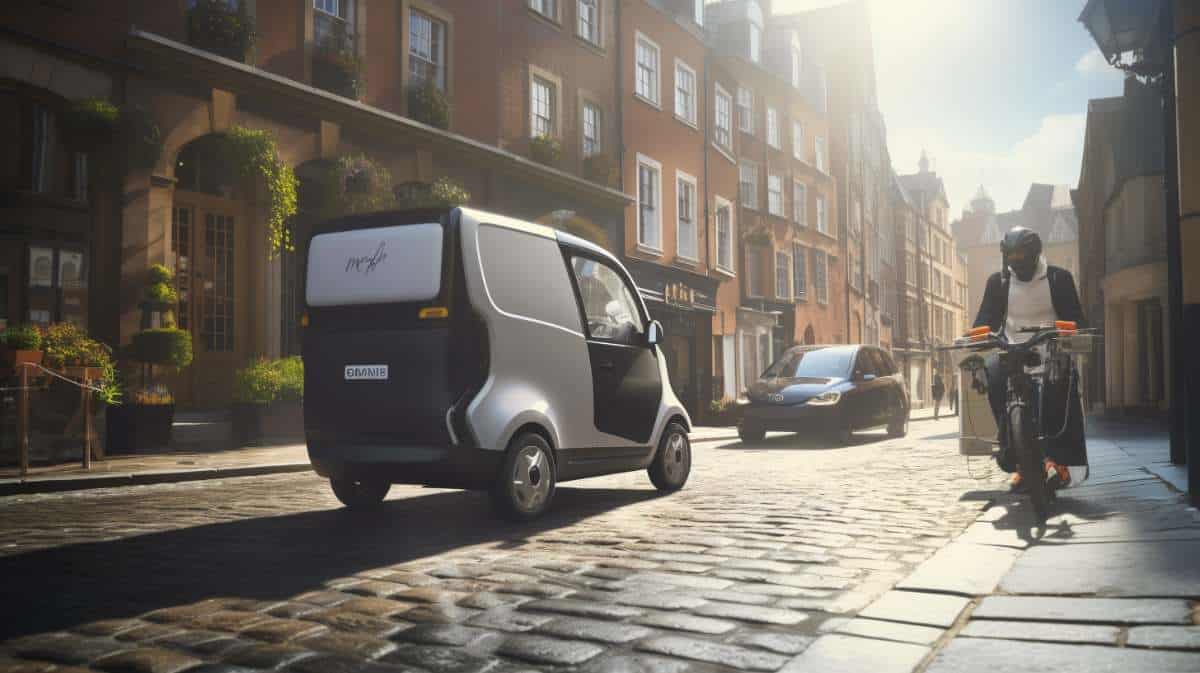Are you concerned about the impact of vehicle emissions on air quality and public health? A promising solution is the Zero Emission Zone (ZEZ), where only emission-free vehicles, such as electric cars or cyclists, are allowed.
This blog will explore what a ZEZ is, its global implementation, benefits and challenges, and its future outlook. Join us to learn how these zones could shape the future of urban transportation for cleaner cities worldwide.

Key Takeaways
| 1 | A Zero Emission Zone (ZEZ) is an area where only zero – emission vehicles, pedestrians, and cyclists are allowed unrestricted access. |
| 2 | ZEZs play a pivotal role in mitigating air pollution and lowering greenhouse gas emissions in urban areas, significantly reducing the public health burden associated with poor air quality. |
| 3 | Many cities around the world, including London, Amsterdam, Barcelona, Oslo, and Vancouver, have implemented or are planning to implement ZEZ initiatives as part of their efforts to combat air pollution and promote sustainable transportation. |
| 4 | Benefits of ZEZs include improved air quality, reduced pollution levels, promotion of sustainable transportation options like electric cars and bikes. Challenges involve infrastructure development for charging stations and enforcing compliance with ZEZ policies. |
What is a Zero Emission Zone (ZEZ)?
A Zero Emission Zone (ZEZ) is an area where only zero-emission vehicles, pedestrians, and cyclists are allowed unrestricted access.
Definition of ZEZ
A Zero Emission Zone (ZEZ) is a designated geographical area where only zero emission vehicles are permitted to operate without incurring any charge. This term specifically applies to environmentally friendly transportation options, such as fully electric cars, motorcycles, and vans that produce no tailpipe emissions.
The ZEZ initiative stems from the global push for reduced air pollution levels and improved urban air quality. It offers an innovative solution in cities like Oxford and London where conventional motor vehicles may face additional charges when entering these zones due to their higher emission rates.
Today, ZEZs stand as powerful tools in mitigating health risks associated with poor air quality including asthma, stroke, heart disease, among others.
Purpose of ZEZ
The primary purpose of a Zero Emission Zone (ZEZ) is to tackle air pollution at its source by restricting or eliminating the use of internal combustion engine vehicles within designated areas.
ZEZs prioritize sustainable urban mobility, allowing only zero emission vehicles and zero emission utility vehicles like electric cars, motorcycles, and delivery vehicles.. Cities implement these zones as part of their broader strategy for reducing emissions both inside and outside the outlined area.
Generally speaking, Zero Emission Zones also apply to commercial vehicles used for deliveries, such as vans and trucks.
In addition to combating air pollution, ZEZs also aim at meeting global emission reduction targets set forth in climate agendas. The goal here isn’t just to clean up our city streets but also contribute significantly towards achieving net-zero emissions on a wider scale.
This innovative zoning standard strengthens our commitment to a greener future where transportation doesn’t harm our environment but supports it.
Impacts of ZEZ on air quality and emissions reduction
Zero Emission Zones (ZEZs) play a pivotal role in mitigating air pollution and lowering greenhouse gas emissions in urban areas. Strategically positioned within cities, these zones target high-emission regions, significantly reducing the public health burden associated with poor air quality.
For instance, Oxford’s major contributors to climate change and air pollution are vehicle emissions – making the implementation of a ZEZ a key strategy for improvement.
The effectiveness of ZEZs extends beyond merely improving air quality. These zones also stimulate positive behavioral changes by incentivizing the use of zero-emission vehicles among city residents and visitors alike.
Essentially, ZEZs contribute extensively towards achieving emission reduction goals by advancing sustainable transportation solutions such as electric or hybrid cars, thereby enhancing city life not only today but also for future generations.
It’s this delicate balance between cutting-edge technology and policy enforcement that makes Zero Emission Zones so instrumental in combating air pollution globally.
Global Implementation of Zero Emission Zones
Cities and countries around the world are embracing zero emission zones, with notable examples including London and Amsterdam.
Examples of cities and countries with ZEZ initiatives
- London, United Kingdom: London has implemented a Low Emission Zone (LEZ) which forms part of its plans for a larger Ultra Low Emission Zone (ULEZ). The ULEZ aims to reduce air pollution and encourage the use of zero-emission vehicles in the city center.
- Brussels, Belgium: Brussels has introduced a low emission zone as an initial step towards implementing a Zero Emission Zone. The city is gradually increasing restrictions on vehicles that do not meet emission standards in order to improve air quality.
- Barcelona, Spain: Barcelona has implemented a ZEZ pilot project called “Superblocks,” where several blocks are transformed into car-free zones, allowing only zero-emission vehicles and promoting sustainable mobility.
- Oslo, Norway: Oslo has established one of the most ambitious ZEZ initiatives by banning diesel cars and heavily polluting vehicles from its city center. The ban has helped improve air quality and encouraged the adoption of electric vehicles.
- Amsterdam, Netherlands: Amsterdam aims to have its entire city center be car-free by 2030, with restricted access for only zero-emission vehicles. The city already has various incentives in place to promote electric vehicle usage.
- Copenhagen, Denmark: Copenhagen is planning to create more ZEZs throughout the city as part of its goal to become carbon-neutral by 2025. It currently operates a LEZ and offers support for residents transitioning to electric cars.
- Stockholm, Sweden: Stockholm introduced a congestion tax system and LEZ to reduce emissions from vehicles entering the city center. The government is also actively promoting zero-emission public transportation options.
- Los Angeles, United States: Los Angeles is working towards creating ZEZs within the city limits as part of efforts to combat air pollution and reduce greenhouse gas emissions. The establishment of charging infrastructure for electric vehicles is crucial in this process.
- Vancouver, Canada: Vancouver aims to have all new buildings produce zero emissions by 2030 and is actively working on implementing ZEZs to reduce vehicle emissions. The city encourages the use of electric vehicles through various incentives.
- Tokyo, Japan: Tokyo has been implementing LEZs and promoting zero-emission vehicles in preparation for the 2020 Olympic Games. The city aims to become a leader in sustainable urban mobility.
Remember, these are just a few examples of cities and countries that have implemented or are planning to implement Zero Emission Zones (ZEZs) as part of their efforts to combat air pollution and promote sustainable transportation. Many more cities around the world are recognizing the importance of ZEZ initiatives and taking steps towards creating cleaner, healthier urban environments.
Progress and outcomes of ZEZ implementation
As various cities globally have commenced the deployment of Zero Emission Zones (ZEZ), remarkable progress has been made in reducing emissions and promoting sustainable transport. The following table provides a summary of some cities where ZEZ initiatives have been implemented and the outcomes achieved.
| City | Progress Made | Outcomes |
|---|---|---|
| Rotterdam | Plans to establish a ZEZ for freight by 2025. | Awaiting implementation. |
| Netherlands | Plans to implement ZEZs in 30-40 cities using a national harmonized approach. | Awaiting implementation. |
| London | Successful implementation of its ZEZ initiative. | Improved air quality and reduction in pollution levels. |
| Oxford | Planning of a ZEZ to reduce pollution and promote clean transport. | Awaiting implementation. |
This table demonstrates the ongoing efforts in various cities to implement ZEZs and the positive impacts on air quality and emissions where these have been realized. The future promises further expansion of ZEZ initiatives as more cities adopt this strategy in their bid for cleaner air and sustainable transport.

Benefits and Challenges of Zero Emission Zones
Benefits of zero emission zones include improved air quality, reduced pollution levels, and promotion of sustainable transportation options. Challenges in implementing these zones involve enforcement complexities and the need for public support.
Benefits of ZEZ in reducing pollution and promoting sustainable transportation
Implementing Zero Emission Zones (ZEZ) brings a multitude of benefits, particularly in reducing pollution and promoting sustainable transportation. By restricting the entry of traditional combustion engine vehicles within these zones, ZEZs significantly reduce tailpipe emissions that contribute to air pollution.
This is especially important considering that vehicle emissions are a major contributor to poor air quality and climate change. ZEZs encourage the adoption of zero-emission vehicles (ZEVs), such as electric cars and bikes, which produce no emissions while operating.
This shift towards ZEVs not only improves local air quality but also helps in achieving broader environmental goals by reducing greenhouse gas emissions. Additionally, promoting sustainable transportation modes like walking, cycling, and mass transit within ZEZs further decreases reliance on fossil fuels and alleviates traffic congestion in urban areas.
Challenges in implementing and enforcing ZEZ policies
Implementing and enforcing Zero Emission Zone (ZEZ) policies present several challenges. One of the main hurdles is the need for infrastructure development to support the transition to zero-emission vehicles (ZEVs).
This includes establishing an adequate charging network to ensure ZEV users have access to reliable power sources. Additionally, allocating space for charging stations can be a logistical challenge in urban areas with limited available land.
Another obstacle is the cost associated with retrofitting existing fleets or transitioning to ZEVs, which may deter some businesses and individuals from complying with ZEZ requirements.
Future Outlook and Expansion of Zero Emission Zones
Future expansion of zero emission zones is anticipated as more cities and regions recognize the importance of reducing pollution and promoting sustainable transportation options. Technology advancements will play a crucial role in supporting these goals, while public support and collaboration are essential in achieving the objectives of zero emission zones.
Potential for ZEZ expansion in other cities and regions
The potential for expanding Zero Emission Zones (ZEZs) in other cities and regions is significant. As urban areas worldwide grapple with increasing air pollution and emissions, ZEZs offer a promising solution to promote greener transportation options and improve public health.
With several European cities already implementing low-emission zones as a stepping stone towards ZEZs, the success of these initial efforts provides inspiration for other cities to follow suit.
By gradually expanding the boundaries of existing low-emission zones outward and incorporating more stringent regulations, cities can create larger ZEZs that encompass more areas and encourage greater adoption of zero-emission vehicles.

Role of technology advancements in supporting ZEZ goals
Technology advancements play a crucial role in supporting the goals of Zero Emission Zones (ZEZ). As cities strive to reduce air pollution and promote sustainable transportation, technological innovations are driving the adoption of zero-emission vehicles.
Improved battery technology allows for longer distances on a single charge, making electric vehicles more practical for everyday use. Additionally, advancements in charging infrastructure make it easier and more convenient for drivers to recharge their vehicles while on the go.
These technological improvements not only contribute to reduced emissions but also help overcome some of the challenges associated with transitioning to zero-emission transportation.
Importance of public support and collaboration in achieving ZEZ objectives
Public support and collaboration are crucial for the successful implementation of Zero Emission Zones (ZEZ) and achieving their objectives. ZEZs aim to improve air quality, reduce congestion, and promote sustainable transportation in cities.
Without public support, the willingness to bear associated costs and adapt to new regulations may be lacking. Collaboration between governments, city planners, transportation operators, and citizens is necessary to ensure effective implementation and expansion of ZEZs.
Furthermore, public knowledge about ZEZs is essential for equitable outcomes as lack of information can create disparities in access and understanding. Therefore, creating awareness among the general public about the benefits of ZEZs is vital for building support and driving positive change towards cleaner urban environments.
Conclusion
In conclusion, the implementation of Zero Emission Zones (ZEZs) is proving to be an effective strategy in combating air pollution and promoting sustainable transportation. Cities around the world are recognizing the importance of reducing emissions from vehicles and creating cleaner environments for their residents.
Moving forward, technology advancements and public support will be crucial in expanding ZEZs to more cities and regions, ultimately leading us towards a greener future.
FAQs
1. What is a Zero Emission Zone?
A Zero Emission Zone refers to an area, typically within a city or urban center, where only vehicles that emit zero exhaust emissions are allowed to enter or operate. This initiative aims to reduce air pollution and combat climate change by encouraging the use of electric vehicles (EVs) and other forms of clean transportation.
2. How does a Zero Emission Zone work?
In a Zero Emission Zone, certain types of vehicles, such as petrol/diesel cars or trucks, are prohibited from entering unless they meet specific emission standards. Only vehicles that run on electricity or other alternative fuels with no tailpipe emissions are permitted in these zones. Enforcement can be done through automated systems and fines for non-compliance.
3. Why implement a Zero Emission Zone?
Implementing a Zero Emission Zone has several benefits. It helps improve air quality by reducing harmful pollutants like nitrogen oxides and particulate matter emitted from traditional combustion engines. It also promotes the adoption of electric vehicles, which contributes to lower greenhouse gas emissions and reduces dependence on fossil fuels.
4. Are there any exemptions in a Zero Emission Zone?
There may be certain exemptions in place for specific types of vehicles in the Zero Emission Zones based on their purpose or unique requirements, such as emergency services vehicles or commercial freight deliveries using low-emission methods like cargo bikes or electric vans.
- Tesla Charger Installation Cost (Home Setups) - March 1, 2024
- Tesla Phone Key Disconnected (Troubleshooting Guide and Quick Fixes) - March 1, 2024
- Tesla FSD 12 (Explained) - March 1, 2024